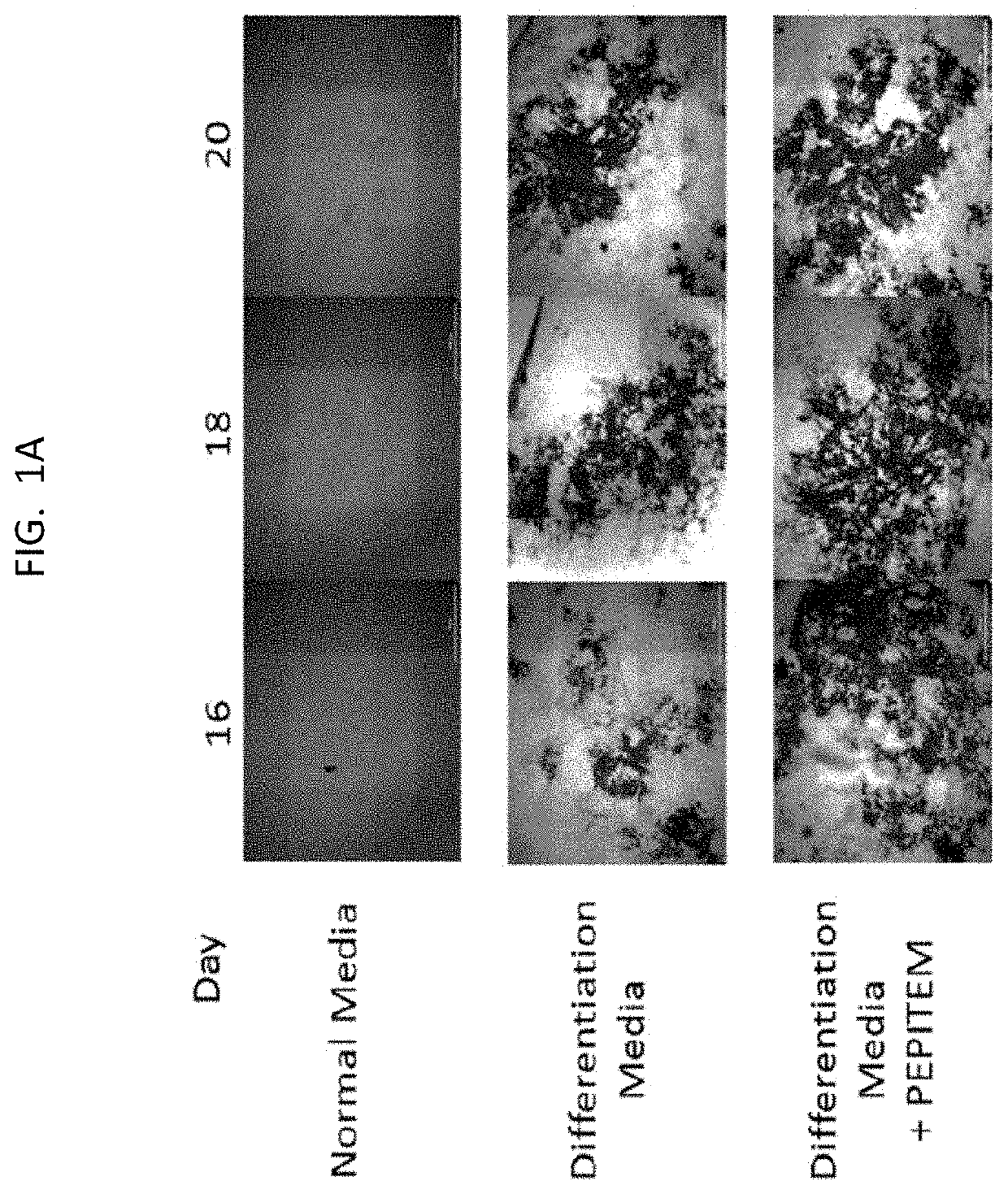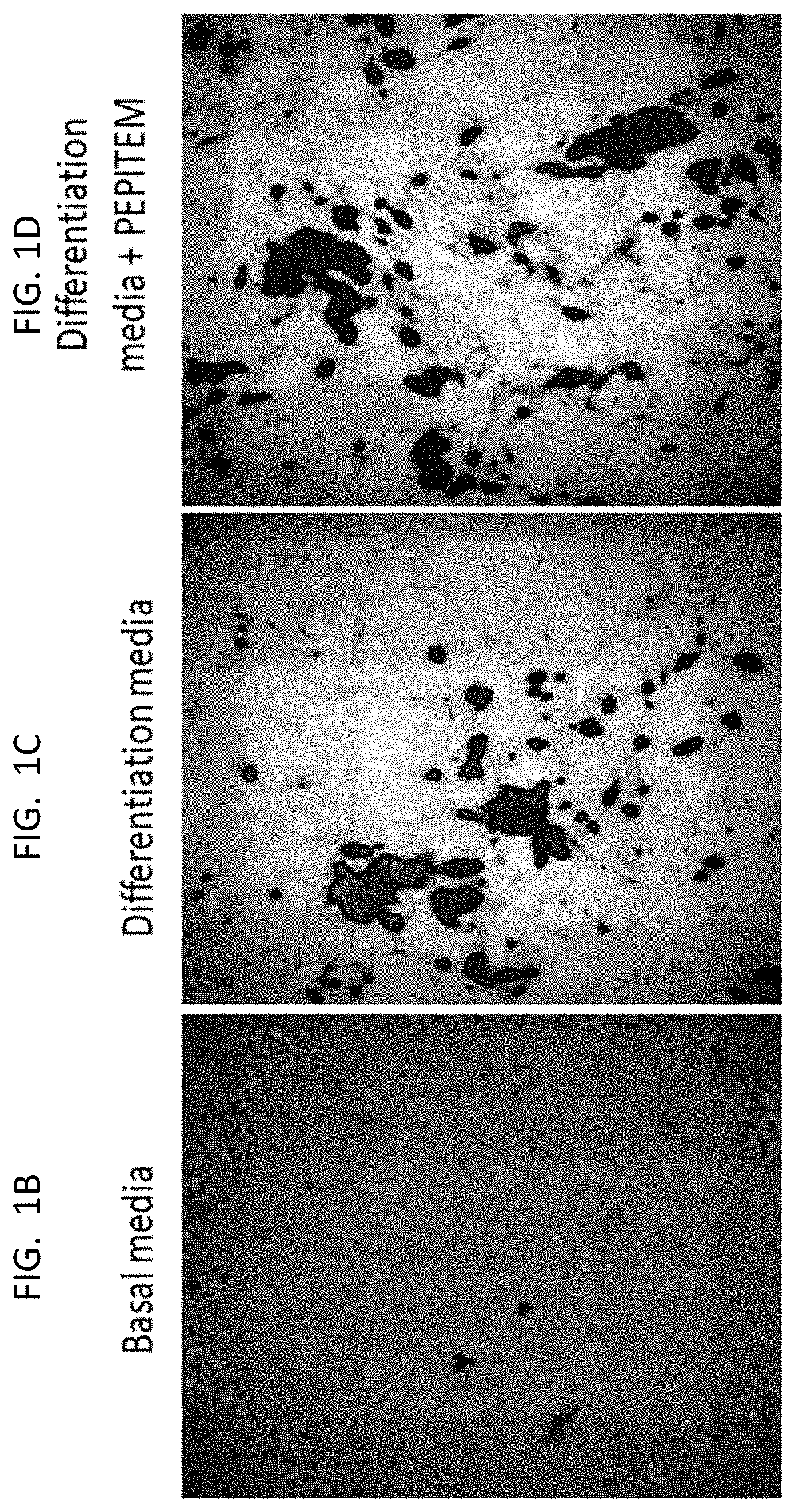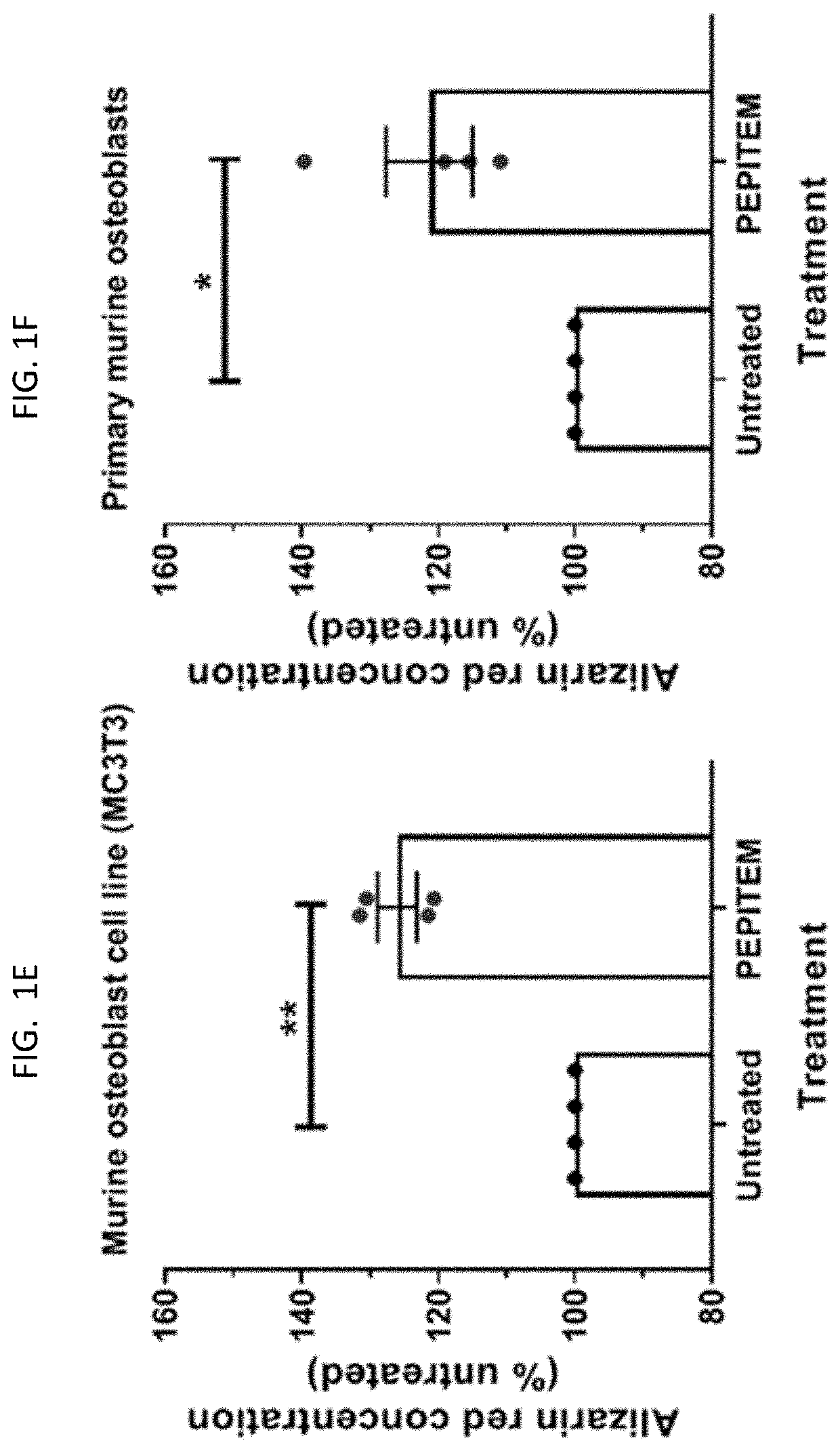Bone disease treatment
a bone disease and treatment technology, applied in the field of bone disease treatment, can solve the problems of reducing independence and further incidence of illness, and achieve the effect of stimulating bone production
- Summary
- Abstract
- Description
- Claims
- Application Information
AI Technical Summary
Benefits of technology
Problems solved by technology
Method used
Image
Examples
example 1
nformation
[0172]Alta Bioscience (University of Birmingham, Birmingham, UK) synthesized PEPITEM.
[0173]Osteoclastogenic / differentiation media for osteoclasts is made up of Minimum Essential Medium (MEM) Eagle (Sigma, M8042), supplemented with 10% fetal calf serum (FCS) and 1% guinea pig serum (GPS), with addition of 50 ng / ml receptor activator of nuclear factor-κB ligand (RANKL) (R&D—462-TEC) and 50 ng / ml macrophage colony-stimulating factor (m-CSF) (R&D, 416-ML).
[0174]Osteoblast differentiation media is made up of MEM, FCS and GPS supplemented with 10 mM B-Glycerophosphate (Sigma—G9422) and 50 ug / ml L-Ascorbic acid (Sigma, A5960).
example 2
gy
A. In Vitro Assays
B. Cells
[0175]1. MC3T3-E1 murine osteoblast cell line;[0176]2. Murine stromal ST2 cell line;[0177]3. Primary murine osteoblasts isolated from the calvarias of pups;[0178]4. Primary human osteoblasts obtained from patients undergoing joint replacement surgery for osteoarthritis;[0179]5. Osteoclasts cultured from osteoclast precursors isolated from tibia and femur bone marrow of mice
C. MC3T3-E1 Cells
[0180]The spontaneously immortalised murine MC3T3-E1 cell line (ATCC, England, UK, CRL-2593) was brought up from liquid nitrogen and cultured in basal media made up of: αMEM media (Sigma-Aldrich™, St. Louis, Mo., USA, M8042) supplemented with 2 mM L-Glutamine, 100 U / ml Penicillin and 100 μg / ml Streptomycin (all from Sigma-Aldrich™, G1146) and fetal bovine serum [(FBS) Biosera™, East Sussex, UK, FB1001]. MC3T3-E1 cells (8×103 cells / well) were seeded into a 48-well plate and were treated with or without 10 ng / ml PEPITEM (Alta Bioscience™; Redditch, UK) diluted in differen...
example 3
n of Results
[0199]The data presented in FIG. 1 and FIG. 2 show that PEPITEM stimulates the production of bone mineral by murine cells (both murine osteoblast cell line MC3T3 and primary murine cells) and primary human osteoblasts when the cells are cultured in isolation in vitro. Murine osteoblast cell line MC3T3 (see FIG. 1E), primary murine osteoblast cells (see FIG. 1F) or primary human osteoblasts (see FIG. 1G) were allowed to mineralize over 21 days in the presence or absence of PEPITEM. Mineralization was assessed by quantification of Alizarin Red staining in murine osteoblasts using colorimetric spectrometry (images shown in FIG. 1A and in FIG. 1B and FIG. 1C) or by quantification of Alkaline Phosphatase Activity in human osteoblasts (FIG. 1D). PEPITEM significantly increased murine and human primary osteoblast mineralization.
[0200]Moreover, the data presented in FIG. 2 and FIG. 3 show that PEPITEM significantly increases bone formation over two weeks in long bones and verteb...
PUM
| Property | Measurement | Unit |
|---|---|---|
| pH | aaaaa | aaaaa |
| composition | aaaaa | aaaaa |
| size | aaaaa | aaaaa |
Abstract
Description
Claims
Application Information
 Login to View More
Login to View More - R&D
- Intellectual Property
- Life Sciences
- Materials
- Tech Scout
- Unparalleled Data Quality
- Higher Quality Content
- 60% Fewer Hallucinations
Browse by: Latest US Patents, China's latest patents, Technical Efficacy Thesaurus, Application Domain, Technology Topic, Popular Technical Reports.
© 2025 PatSnap. All rights reserved.Legal|Privacy policy|Modern Slavery Act Transparency Statement|Sitemap|About US| Contact US: help@patsnap.com



